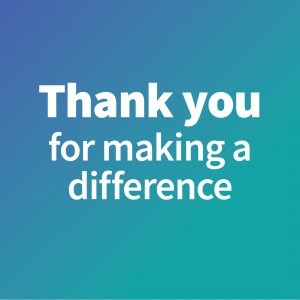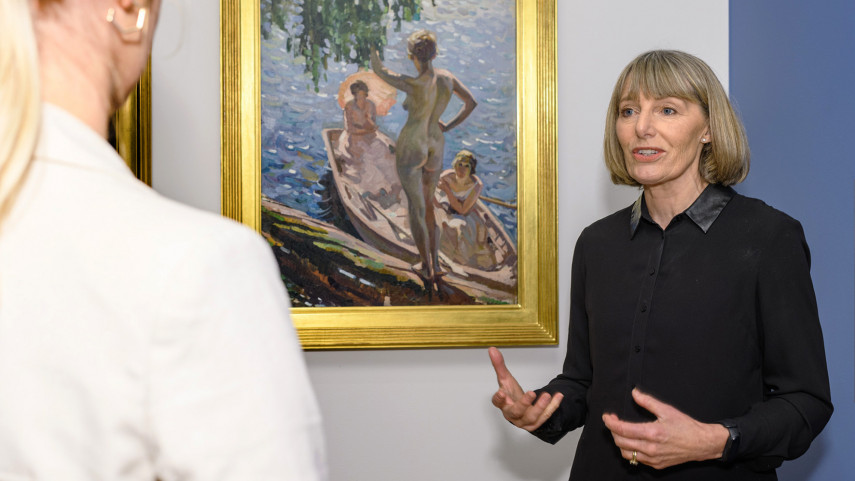Brush with love of art sets scene for volunteer guide
Share this story
For Allanah James, “seeing the expression of deep satisfaction on a visitor’s face when they ‘get’ the work of Ralph Hotere is uplifting and inspiring”.
The volunteer tour guide at Christchurch Art Gallery Te Puna o Waiwhetū strives to “connect people with art, ideas about art and with artists”.
 “I want to support that connection – to increase the satisfaction and enjoyment that visitors experience while in the Gallery,” she explains. “These tours – led by 50 Gallery volunteers – help our visitors get so much more out of the art they view.”
“I want to support that connection – to increase the satisfaction and enjoyment that visitors experience while in the Gallery,” she explains. “These tours – led by 50 Gallery volunteers – help our visitors get so much more out of the art they view.”
Ms James applied to be a Gallery volunteer in 2020 “because I believe art really matters”, and underwent weekly training for three months.
“The training was outstanding,” she says. “We were given an overview of the history of the Gallery and its art collection, as well as learning about many significant New Zealand and international artists, printmaking, sculpture, painting and drawing.
“We also have a two-hour briefing before each new exhibition opens and are encouraged to attend the Gallery curators’ floor talks, which provide further in-depth information. It’s a journey of ongoing learning and development, which I thoroughly enjoy.”
Today, Ms James provides several 45-minute tours each month, and helps with the Gallery’s programme for primary and high school students.
“About 11,000 youngsters a year are given a tour of the Gallery,” she says.
Ms James has also delivered an Art Bite talk to Gallery visitors.
“Last year, I researched Evelyn Page’s painting, Summer Morn, for an essay I wrote as part of my studies towards a post-graduate Diploma in Art History at the University of Canterbury. It was a wonderful experience to be able to share my research with Gallery visitors and have their feedback.”
Ms James points to the current Hotere exhibition to underline the importance of the Gallery tours.
“Some Hotere paintings feature numbers and the word ‘Sangro’. Some visitors meander past these paintings without appearing to significantly connect with them,” she says.
“However, people on the tours connect. We explain that Hotere was 12 when his brother, Jack, was killed in World War II at the Sangro River in Italy.”
Hotere later visited his brother’s grave in the military cemetery and noted the ages of Maori Battalion members who had died at the Sangro – “some were just 19, 20, 21 or 22”. Their ages became the numbers in his Sangro series of paintings.
“In one work, he forms the ages into a cross and places a bold square around the number 21 – his brother’s age when he was killed. Beneath the cross, Hotere places his own cross – an ‘X’. It is a symbol of negation – saying ‘no’ to the deaths of these young men. Saying ‘no’ to war.
“I can see people connecting with the artwork – their empathy with Hotere’s grief, pain and loss.”
Ms James encourages others to “share your passion for art”.
"It’s a two-way street. Some visitors share their knowledge about an artwork or an artist who may have been their close friend. So, we guides are learning all the time from the visitors we meet.”
20 to 26 June is National Volunteer Week. Find out how you can make a difference in your community by volunteering.

